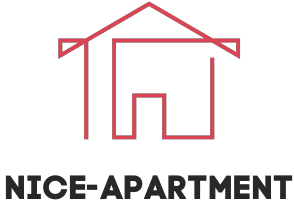The rental market is a vital component of the real estate sector, offering various housing options to millions of people in the United States. In recent years, the rental market has experienced significant changes and growth, with many renters and property managers adapting to these shifts. This comprehensive article will discuss the current rental market trends, focusing on rent prices, the impact of the housing market, and the factors affecting rental prices such as mortgage and interest rates. We will also analyze data on apartments, single-family homes, and bedroom types to provide a clear picture of the current market situation.
Rent Price Trends: Where Are We Now?
Rent prices play a crucial role in shaping the rental market landscape. Understanding the current trends in rent prices can provide valuable insights for renters, property managers, and real estate investors. In this section, we will explore the latest data on median rent, rent growth, and other relevant statistics.
In the past year, rent prices in the United States have experienced a steady increase, with the national median rent reaching $1,695 per month in December. This represents a significant 9.4 percent growth year-over-year. This increase is mainly driven by the high demand for rental properties and the limited supply of available units.
The high rent growth rate also reflects the recovery of the rental market after a period of stagnation during the early stages of the COVID-19 pandemic. As the economy rebounds and people return to work, many urban areas have seen a surge in rental demand, further driving up prices.
When analyzing rent prices by property type, we can observe that single-family homes have experienced a higher growth rate than apartments. In the past year, the median rent for single-family homes reached $2,295 per month, marking an impressive 12.9 percent increase year-over-year. In contrast, the average rental price for apartments grew by a more modest 7.6 percent, reaching $1,495 per month.
As for bedroom types, larger units have seen the most significant rent increases. The median rent for a three-bedroom apartment reached $1,965 per month, while two-bedroom and one-bedroom units saw prices of $1,575 and $1,330 per month, respectively.
How the Housing Market Affects Rental Trends
The relationship between the housing market and the rental market is closely intertwined. Factors like home prices, homes for sale, and mortgage rates can directly impact the demand for rental properties. Let’s explore this relationship and how it influences current rental trends.
In recent months, the housing market has experienced record-high prices and a shortage of available homes for sale. With median home prices reaching $383,900 in October, many potential homebuyers might find themselves priced out of the market. This, in turn, leads to an increased demand for rental properties, as people look for more affordable alternatives to homeownership.
Mortgage rates also play a critical role in driving rental demand. As of September, the average 30-year fixed mortgage rate reached 4.01 percent, a noticeable increase from 2.81 percent in October the previous year. This rise in mortgage rates can make buying a home less attractive, pushing more people to consider renting instead.
Furthermore, changes in the housing market can also impact rental prices. As home prices continue to climb, property managers and landlords might adjust rents accordingly to cover mortgage costs or capitalize on the high demand for rental units.
Factors Influencing Rental Prices: Interest Rates and Beyond
Aside from the housing market, several other factors can influence rental prices. In this section, we will focus on interest rates and other relevant aspects that shape the current rental market trends.
As mentioned earlier, rising mortgage rates can have a direct impact on rental demand and prices. However, the relationship between interest rates and rental prices is not a one-way street. The Federal Reserve’s monetary policy decisions can also affect the rental market by influencing borrowing costs and investment returns. For example, if the Fed decides to raise interest rates, it could lead to higher mortgage rates, making homeownership less affordable and potentially pushing more people into the rental market.
Another factor to consider is demographic changes and shifts in living preferences. For example, the millennial generation (those born between 1981 and 1996) is known for its preference for urban living and delayed homeownership. As this group continues to age and start families, their demand for rental properties, particularly in urban areas, is likely to remain strong. This sustained demand could contribute to higher rental prices in the long term.
Lastly, the overall economic climate can impact rental prices and trends. Factors such as job growth, wage increases, and inflation can all influence the affordability and demand for rental properties. A strong economy with robust job growth can lead to increased rental demand and higher prices, while an economic downturn with high unemployment rates might result in lower demand and stagnant or decreasing rental prices.
In Conclusion: What Does the Future Hold for the Rental Market?
In summary, the current rental market trends are characterized by increasing rent prices, driven by high demand and limited supply. The housing market’s elevated home prices and rising mortgage rates have made renting a more attractive option for many people, further contributing to the growth in rental prices. Additionally, factors such as interest rates, demographic changes, and the overall economy play a crucial role in shaping rental market trends.
Looking ahead, it is difficult to predict with certainty how the rental market will evolve. However, several factors suggest that these trends may persist in the short term. With the ongoing housing shortage, high home prices, and rising mortgage rates, it is likely that demand for rental properties will remain robust. Furthermore, as millennials continue to age and seek urban living options, their demand for rental units is expected to endure.
Ultimately, staying informed about current rental market trends is essential for renters, property managers, and real estate investors alike. By understanding the factors shaping this market, you can make more informed decisions and better navigate the ever-changing landscape of the rental market.

